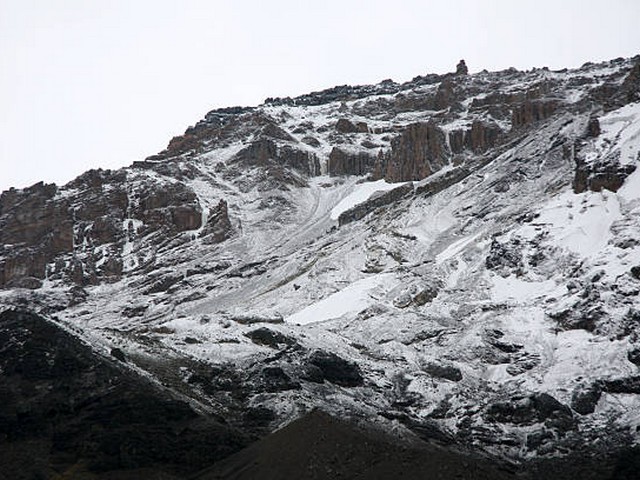Nature and Wildlife Encounters on Kilimanjaro Machame Route
Exploring the Heart of Africa with Kilimanjaro Centre for Trekking and Ecotourism (KCTE)
Ascending the mighty Mount Kilimanjaro is not just a journey of altitude, but also an expedition through diverse ecosystems brimming with unique wildlife and breathtaking landscapes. The Machame Route, known affectionately as the "Whiskey Route," is particularly famed for its scenic beauty and the richness of flora and fauna one encounters on the way to the peak of Africa. Join us, Kilimanjaro Centre for Trekking and Ecotourism (KCTE), as we guide you through unforgettable nature and wildlife encounters on the Machame Route that will leave you inspired and in awe of the natural world.
Why Choose the Machame Route for Your Kilimanjaro Adventure?
The Path Less Travelled
Unlike the more crowded Marangu Route, the Machame Route offers a more secluded and intimate connection with nature. This path allows trekkers to immerse themselves in the beauty of Kilimanjaro without the distraction of heavy foot traffic, making wildlife sightings more frequent and enjoyable.
Diverse Ecosystems
The Machame Route is celebrated for traversing through multiple ecosystems – from rainforests to alpine deserts, each zone offers unique wildlife and plants. This variety not only enriches the trekking experience but also maximizes the opportunities for nature and wildlife encounters.
Unveiling the Natural Wonders Along the Machame Route
The Lush Montane Forests
Your journey begins in the montane forests that cloak Kilimanjaro’s lower slopes. This dense green canopy is alive with the chirps and calls of numerous bird species. Watch for the Hartlaub’s Turaco or the Kilimanjaro White-eye. The air is filled with the fresh scent of wet earth and the rich aroma of wildflowers. It’s not uncommon to spot blue monkeys swinging through the trees or even the occasional bushbaby peering down curiously at night.
The Heath and Moorland
As you ascend, the landscape transforms dramatically into heath and moorland, offering expansive views and a change in the wildlife composition. This zone is home to the unique Giant Lobelia and Groundsel plants, endemic to East African high-altitude areas. The stark beauty of this area is often enhanced by the sight of a majestic eagle soaring overhead or the shy eland grazing in the early morning mist.
The Alpine Desert
The alpine desert offers a stark contrast to the lush lower slopes with its sparse vegetation and rocky terrain. However, even in this seemingly inhospitable environment, life flourishes. Hardy insects like the Kilimanjaro dung beetle are often spotted here. This zone provides breathtaking vistas under a vast sky, where the clouds feel almost within reach.
The Arctic Summit
Reaching the summit zone, the temperatures drop and the landscape unveils icy glaciers and snow-capped peaks. While wildlife is sparse at this altitude, the encounter with the rooftop of Africa is an awe-inspiring experience that parallels no other. The sunrise from Uhuru Peak transcends mere visual beauty—it’s a moment of profound accomplishment and spiritual upliftment.
Protecting Kilimanjaro’s Natural Heritage
As you journey through these extraordinary landscapes, it’s important to remember the role we all play in conserving this precious environment. Kilimanjaro Centre for Trekking and Ecotourism (KCTE) is committed to sustainable tourism practices that minimize environmental impact and support local communities. We encourage all our trekkers to follow guidelines that help preserve the beauty and integrity of Mount Kilimanjaro.
Plan Your Trek with Kilimanjaro Centre for Trekking and Ecotourism (KCTE)
Embarking on a trek up Mount Kilimanjaro via the Machame Route with KCTE not only promises spectacular nature and wildlife encounters but also ensures a safe, memorable, and responsible adventure. Our experienced guides and porters are trained to provide you with insightful knowledge about the mountain’s ecosystems and wildlife, enhancing your experience and appreciation of your surroundings.
Frequently Asked Questions
What is the best time to trek the Machame Route?
The best times to trek the Machame Route are during the dry seasons, from late June to October and from late December to March. This timing avoids the heavy rains and offers clearer views and more pleasant trekking conditions.
How difficult is the Machame Route?
The Machame Route is considered challenging due to its steep trails and longer distances. However, it offers more acclimatization opportunities, which can help trekkers adjust to the altitude. With proper preparation and support from KCTE’s expert guides, many enthusiasts successfully reach the summit.
What wildlife might I see on the Machame Route?
The Machame Route offers the chance to see a variety of wildlife, including monkeys, birds, and smaller mammals. While wildlife sightings are always a matter of luck and timing, our guides make every effort to point out any animals and explain their roles in the Kilimanjaro ecosystem.
How do I prepare for the trek?
Preparation should include physical training, proper gear, and familiarizing yourself with high-altitude conditions. KCTE provides pre-trek briefings and comprehensive support to ensure you are fully prepared for your Kilimanjaro adventure.
Ready to Explore?
Are you ready to explore the stunning nature and wildlife of Mount Kilimanjaro? Book your trekking adventure with Kilimanjaro Centre for Trekking and Ecotourism (KCTE) today and step into a world of awe-inspiring beauty and challenge that will enrich your life forever. Let the Machame Route be your gateway to the experience of a lifetime. Join us, and embrace the spirit of Africa at its peak!




